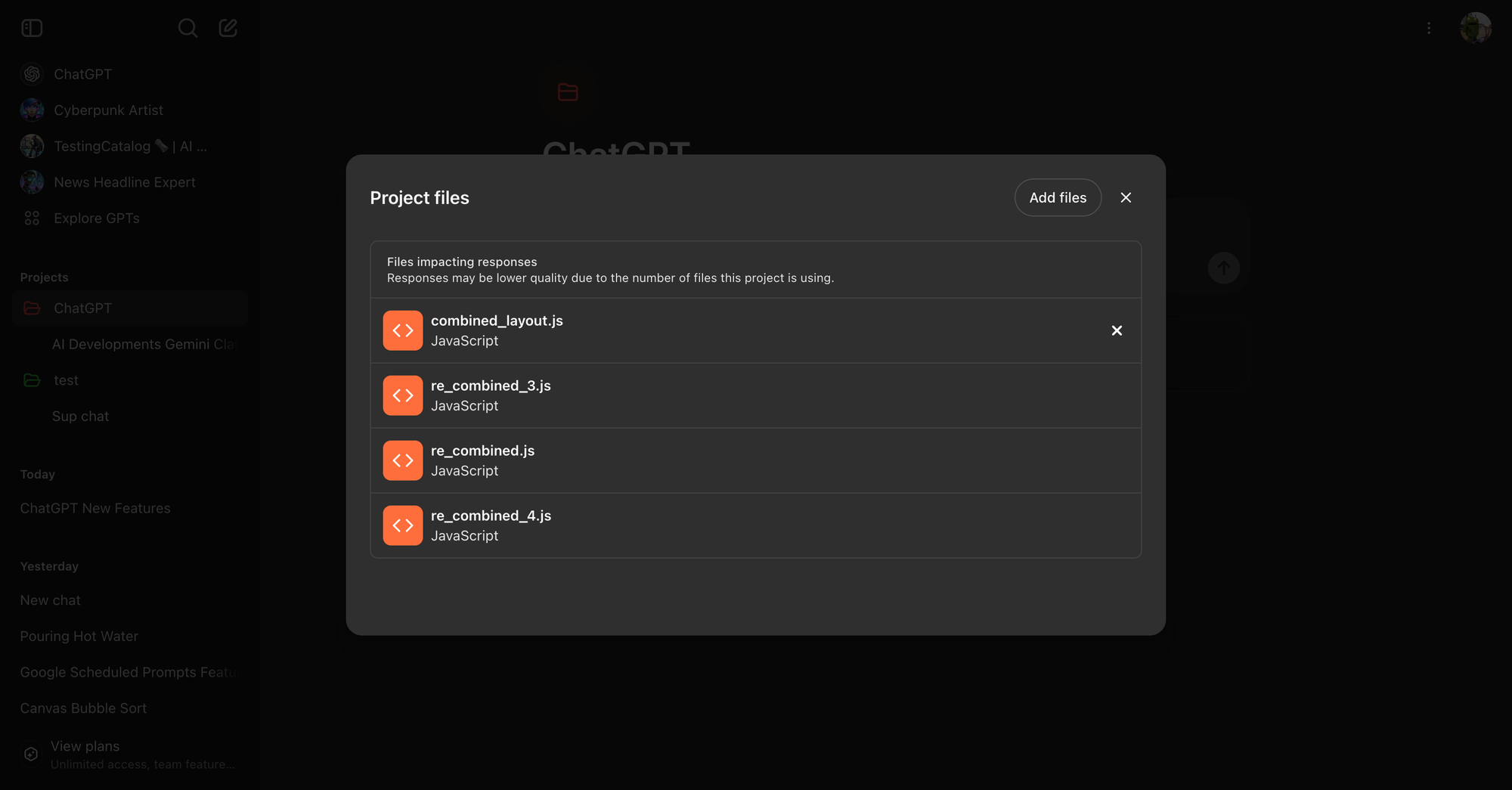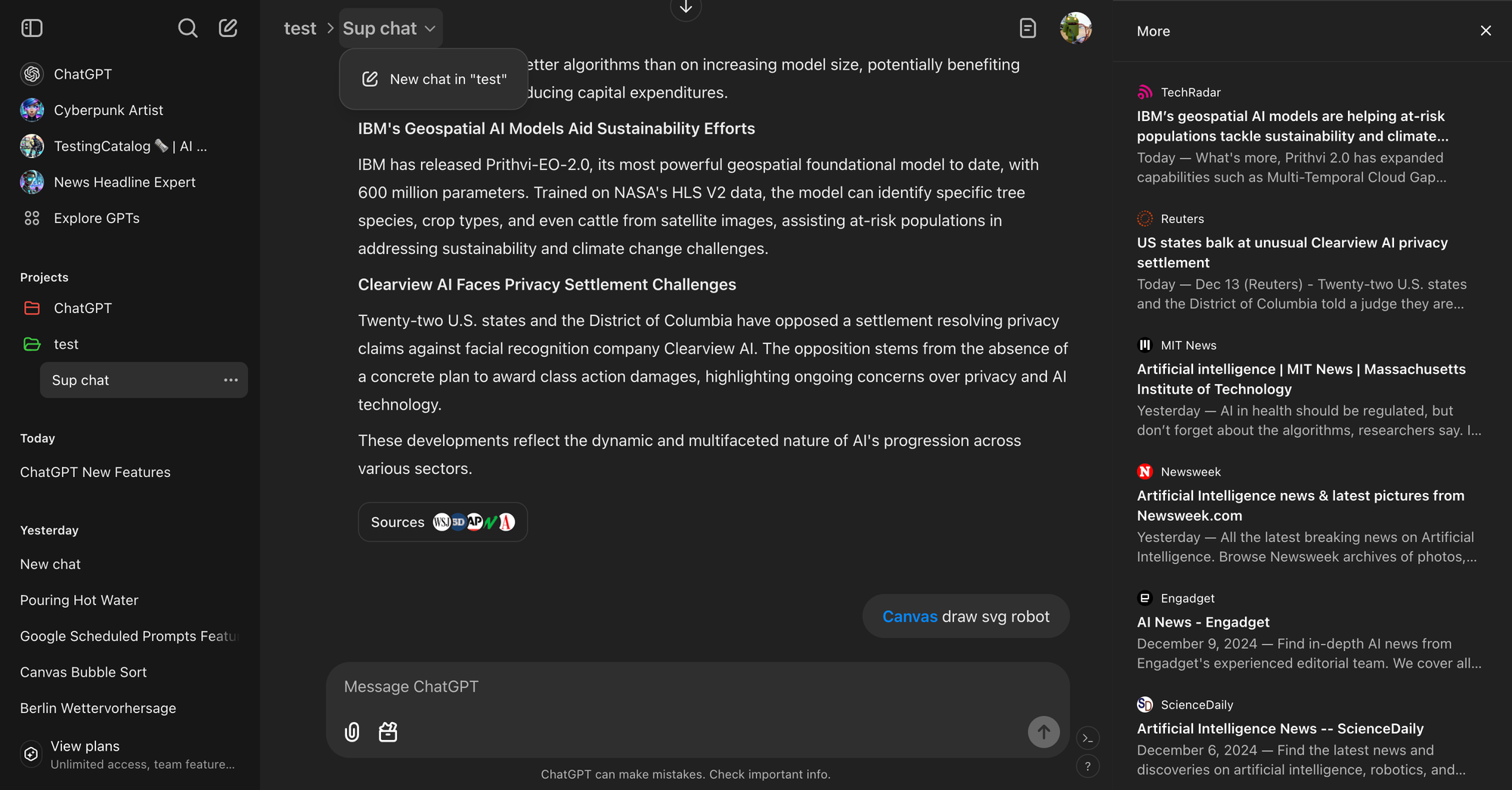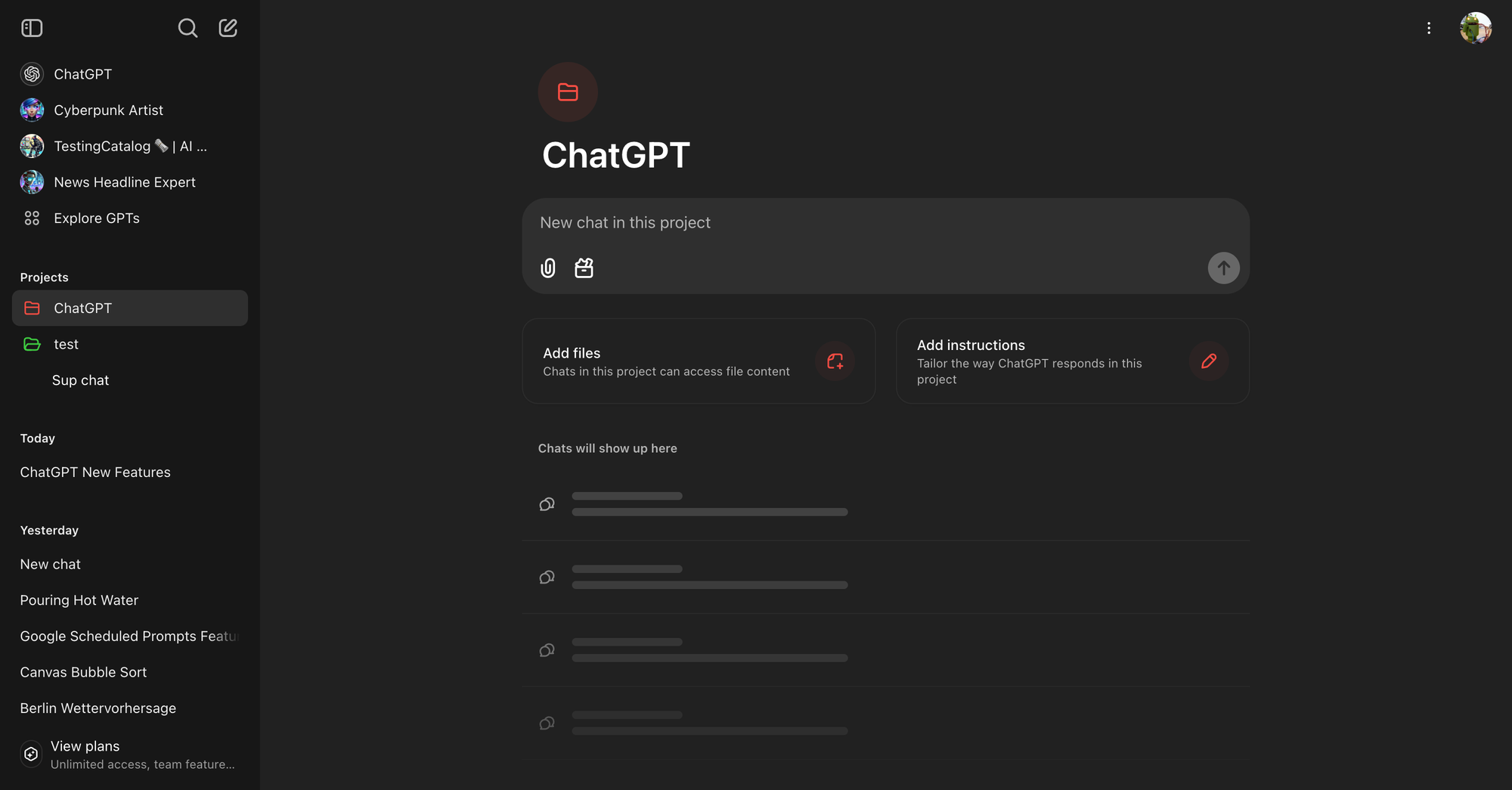OpenAI has introduced a new feature called "Projects" in ChatGPT, designed to help users organize their interactions with the AI more effectively. This feature allows users to group related chats, files, and custom instructions into a single workspace, making it easier to manage ongoing tasks and revisit relevant resources.
ChatGPT Projects
The "Projects" feature is currently available globally for ChatGPT Plus, Pro, and Team users on platforms such as chatgpt.com, the ChatGPT desktop app for Windows, and mobile or macOS apps. OpenAI plans to extend this functionality to Enterprise and Education (Edu) accounts in January 2025, with further plans to make it accessible to free-tier users in the future.

Key Features of Projects
- Workspace Organization: Users can create a project by clicking the plus icon in the ChatGPT sidebar. Within each project, they can name it, assign a color for easy identification, and add files or custom instructions to provide context for subsequent conversations.
- Chat Management: Existing chats can be dragged into a project, or users can start new ones directly within the project. The feature also supports searching through chat history to move older conversations into relevant projects.
- File Integration: Files can be uploaded into projects to serve as references during chats. This is particularly useful for tasks like coding projects or collaborative planning.
- Custom Instructions: Users can set specific instructions within a project so that ChatGPT retains context and provides more targeted assistance.

About OpenAI
OpenAI is an AI research organization known for creating advanced language models like GPT-4o. The company has been at the forefront of generative AI innovation since launching ChatGPT in November 2022. With features like Projects, OpenAI continues to refine its tools to cater to professional and personal use cases while maintaining its focus on user-centric design.






